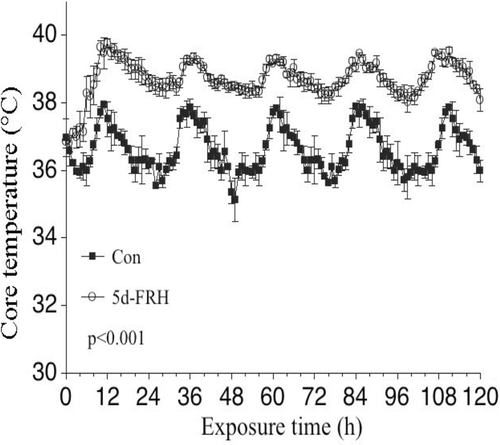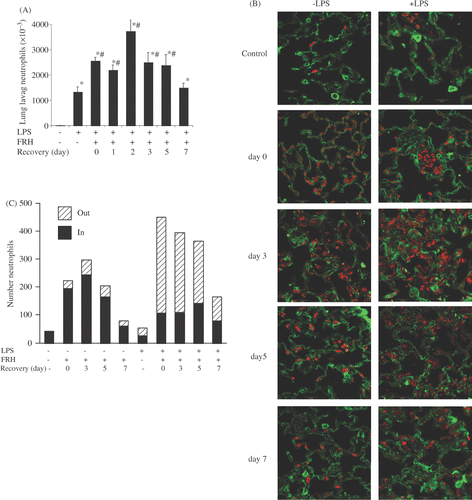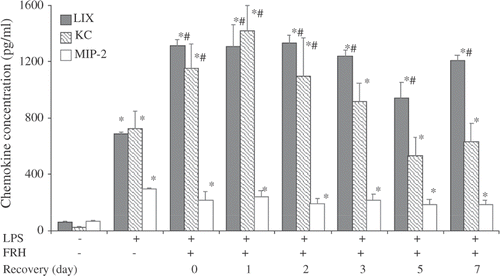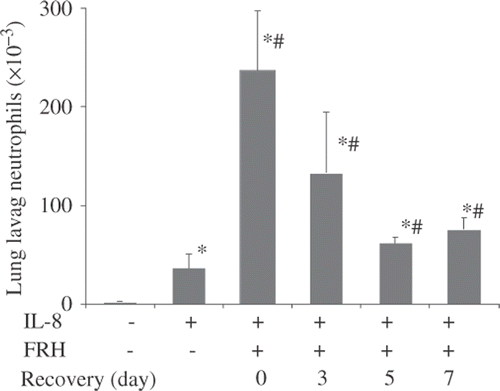Figures & data
Figure 1. Core temperature during passive 5d-FRH: Mice implanted with i.p. sensors were housed at 25°C (Control) or 37°C (FRH) ambient temperature for 5 days while continuously monitoring core temperature. The mean temperature for each hour was calculated. Two experiments, each with four mice per group, were pooled. Data are mean ± SE. Core temperature in FRH mice was greater than control with p < 0.001 by repeated measures ANOVA.

Figure 2. 5d-FRH exposure increases neutrophil recruitment to lung after i.t. LPS challenge. Mice were exposed to 5d-FRH and then transferred to room temperature for post exposure recovery. LPS-treated normothermic controls or 5d-FRH-exposed mice received 50 µg LPS i.t. either immediately (0 days) or as indicated whereas LPS-untreated mice received sterile PBS and euthanised after 24 h at room temperature. (A) lungs were lavaged and total neutrophil content determined by manual counting. Mean ± SE of 4 mice per group. * and # denotes p < 0.05 versus PBS- or LPS-treated controls, respectively. (B) lungs were inflation/fixed, stained for neutrophils (Gr-1, red) and endothelium (VE-cadherin, green) and analysed by confocal microscopy. Representative fields of three mice per group are shown. (C) Confocal images were analysed for number of total, intravascular (IN) and extravasating (OUT) neutrophils per 60× field. Mean of three fields per mouse, three mice per group plotted.

Figure 3. 5d-FRH exposure has a profound and lasting effect on LPS-induced CXC chemokine levels in lung: Mice were treated as indicated above (), lungs lavaged, and KC, LIX and MIP-2 assayed by ELISA. Data are mean + SE, of four to six mice per group. * and # denotes p < 0.05 versus PBS or LPS-treated controls, respectively.

Figure 4. 5d-FRH exposure increases capacity for IL-8-directed neutrophil transalveolar migration. Mice were treated as indicated above () except 1 µg rhIL-8 was instilled i.t. instead of LPS and mice were euthanised for lung lavage 4 h later and neutrophils counted. Mean ± SE of four mice per group. * and # denotes p < 0.05 versus PBS- or LPS-treated controls, respectively.

